Bolivia - Salar de Uyuni
I just returned from my trip to El Salvador, Nicaragua, Peru and Bolivia. I just updated my site with the first of my many updates from this trip, I will post them all here as I have a chance to go through the pictures.
Uyuni is a small town in the southwestern part of Bolivia, it was founded in 1889 by Bolivian president Aniceto Arce. It is very famous for the nearby salt lake, the Salar de Uyuni. The lake is located just a few kilometers from the town, and sits at an elevation of 3,653 meters. It is the worlds largest salt flat, encompassing 12,106 square kilometers (Almost 30 times the size of the Bonneville Salt Flats).
Nearby the town is a train graveyard that houses Bolivia's first steam engine, El Chirpa, dating from 1890. There is also an ore train that was robbed by the legendary bandits Butch Cassidy and the Sundance Kid (They both moved to Argentina then Bolivia to escape the attention they started receiving in the United States after their robberies).
40,000 to 25,000 years ago, lake Minchin existed in this region. It evaporated, and the area was dry for around 14,000 years before lake Tauca came into existence. Tauca was only around for about 1,000 years, and dried out. At it's highest point, the lake reached an elevation of 3,720 meters. After Tauca dried up, the lakes of Poopo and Uru Uru remained, as well as two areas of major salt concentration, the Salares de Uyuni and Coipasa.
The Salar de Uyuni is estimated to contain 10 billion tons of salt, with 20,000 tons being extracted yearly at the moment (18,000 tons for human consumption, 2,000 for livestock).
The lake has numerous islands on it, such as Isla Incahuasi. The island looks very surreal coming out of the totally white ground as you're driving towards it, and is covered by Trichoreus cactuses.
Volcan Tunupa rises out of the lake to a height of 5,432 meters. At it's base is a small village of Coquesa, surrounded by ancient villages and burial grounds. Ceramics, articles of clothing, gold and copper artifacts have been discovered in the area. Unfortunately, over the years many items have been stolen by tourists visiting the area. Partly up the volcano is an ancient cave that was used as a burial ground, some skeletons remain there and local people bring them offerings every once in a while.
The lake is a breeding ground for three different types of Flamingos. The Chilean flamingo, which reaches a height of over 1 meter and has a black-tipped white bill, the James flamingo which has dark red legs and a yellow and black bill, and the Andean flamingo, which is the largest of the three.
The Salar de Uyuni has more interesting things to see, but unfortunately I did not have the time to visit them. I will write about them at some point in the future, but for now please enjoy the pictures.
Train graveyard
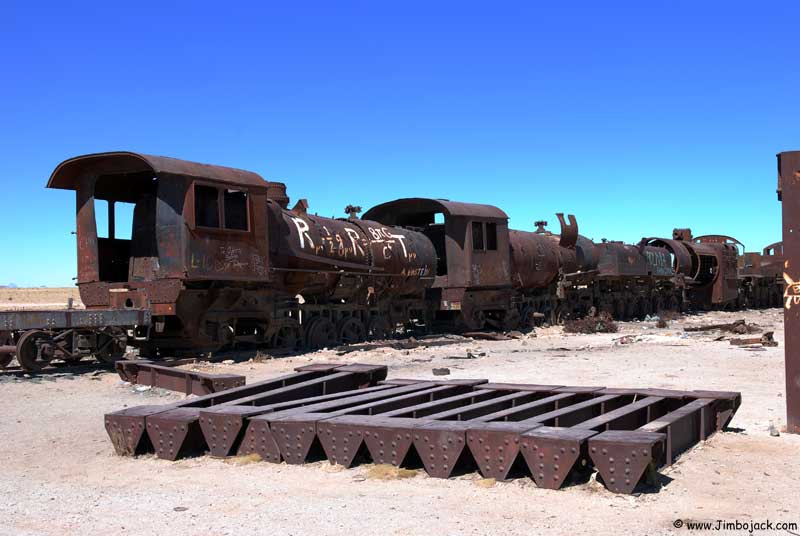
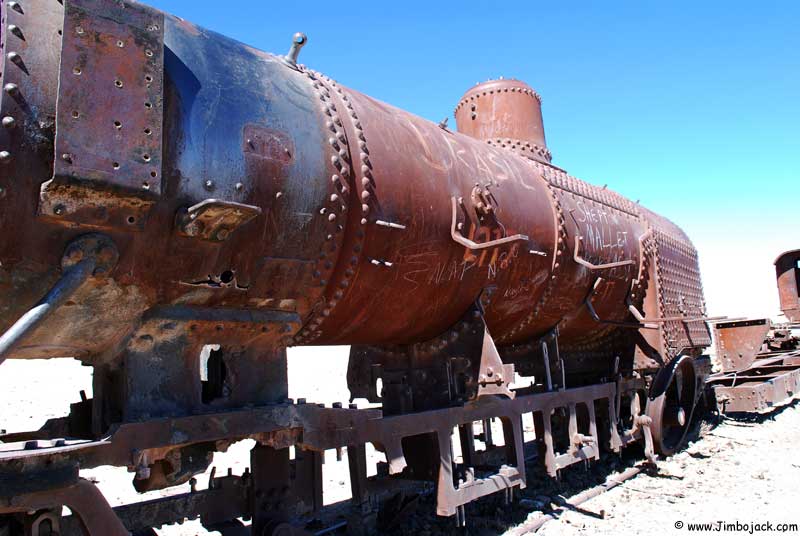
Salt mounds
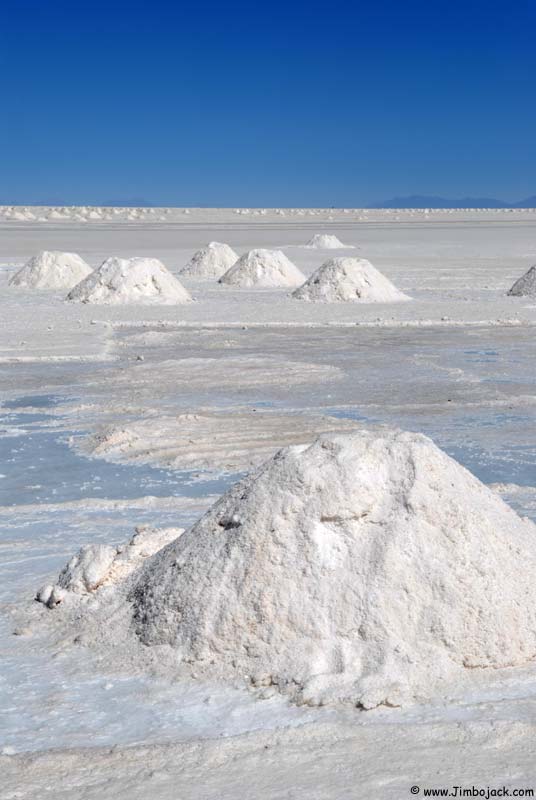
Men gathering salt
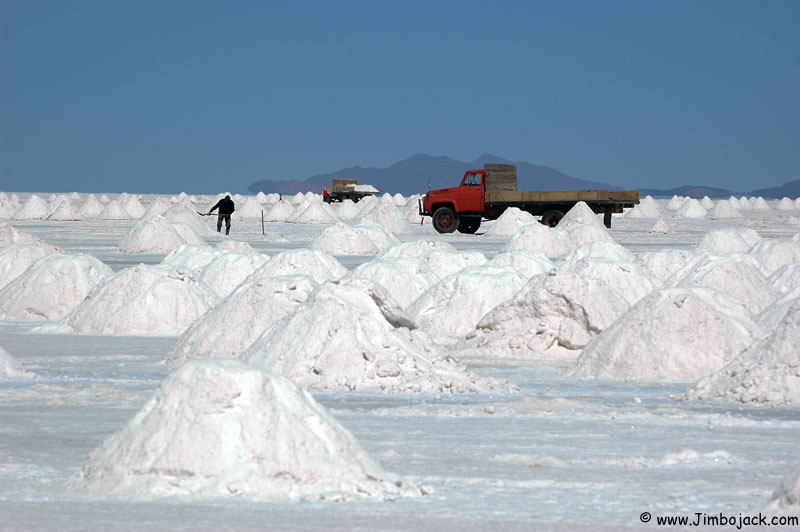
Geothermal activity at the lake
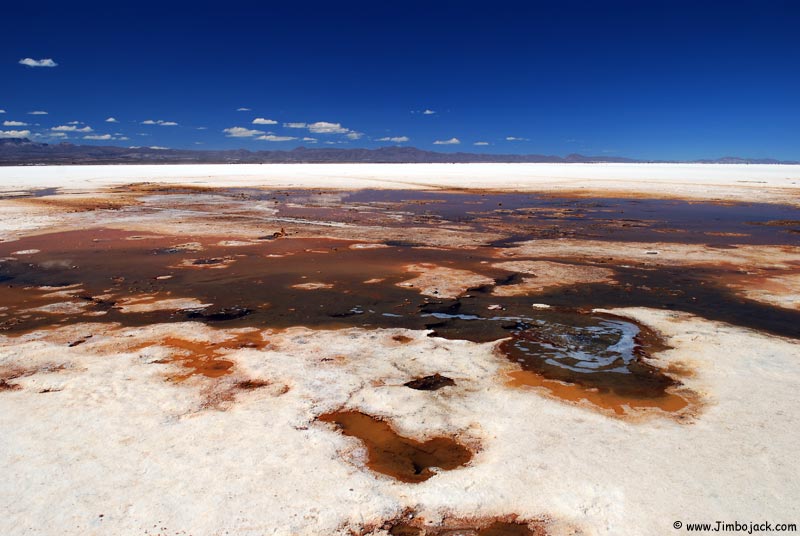
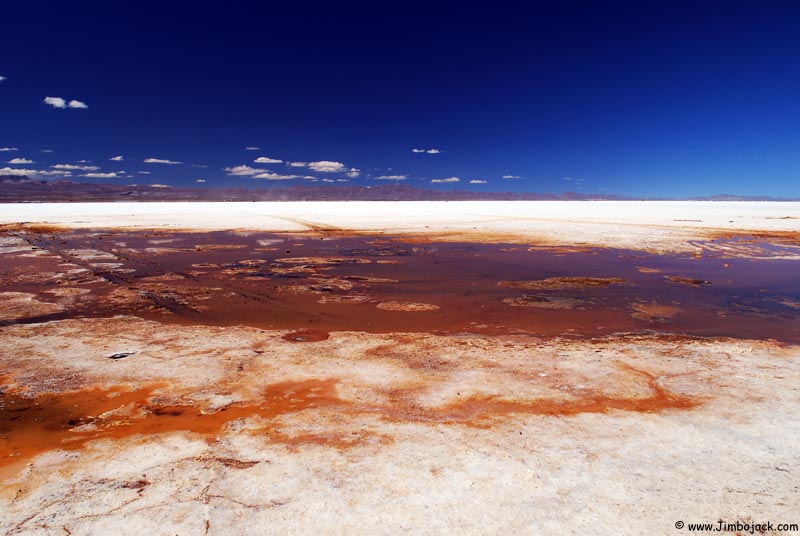
My Land Cruiser
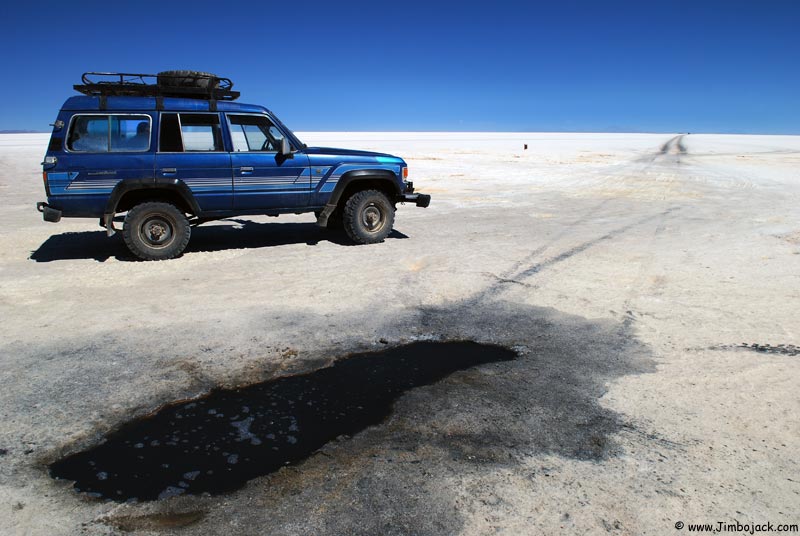
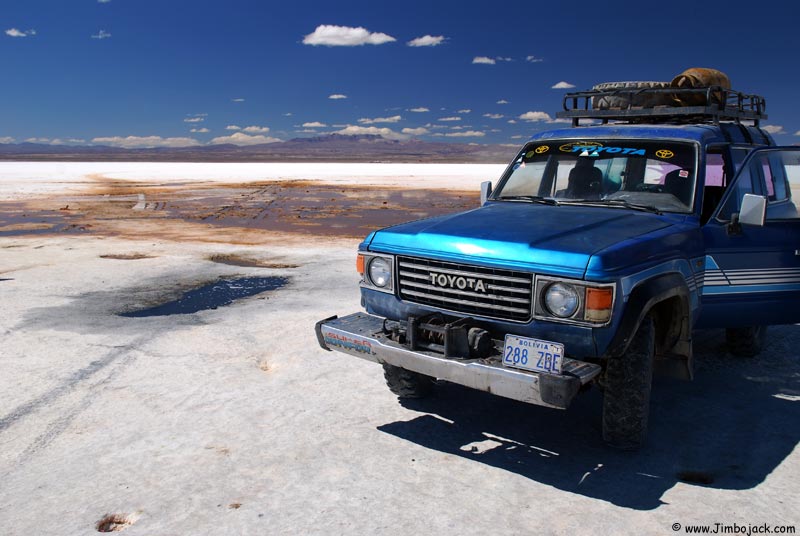
Here I am airborne for a second
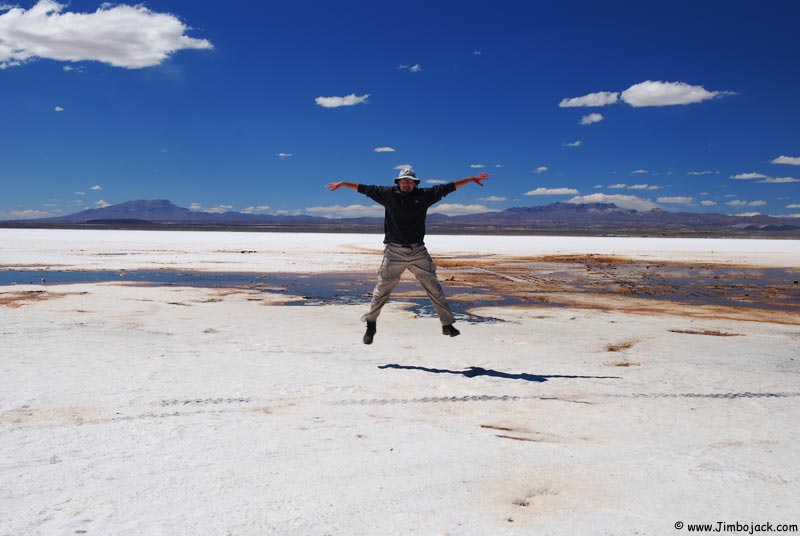
Land Cruiser and flags
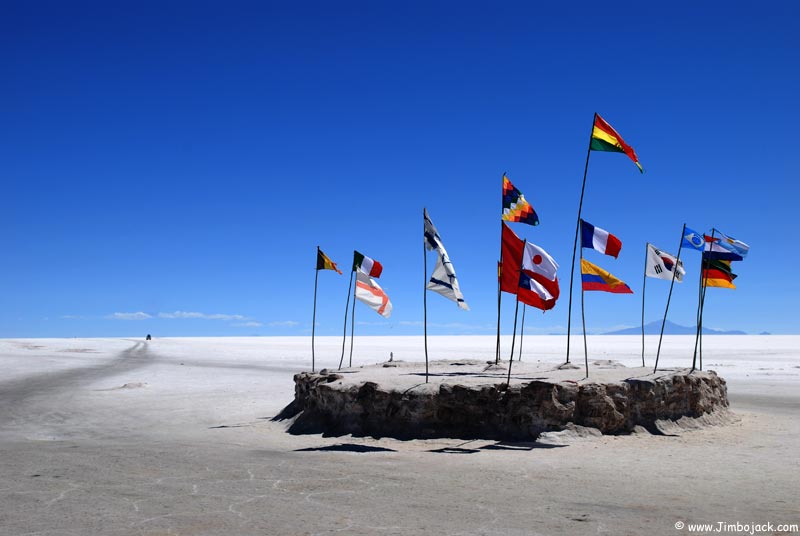
Salt Hotel
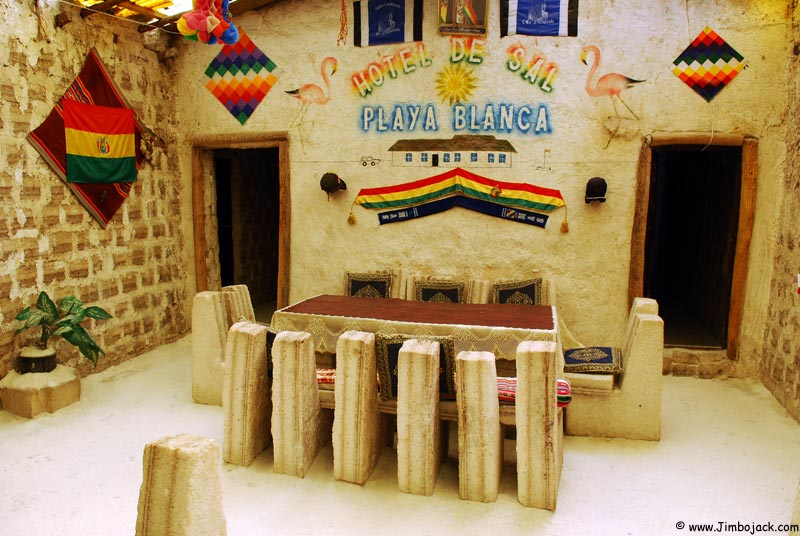
Isla Incahuasi
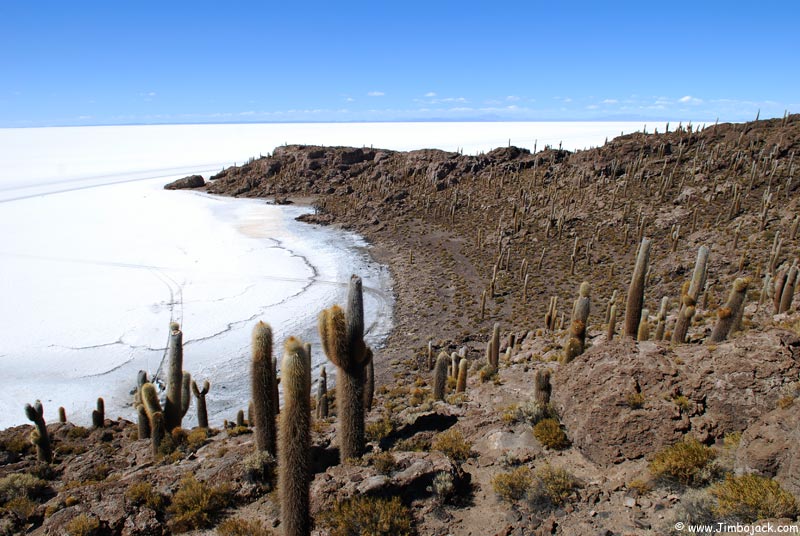
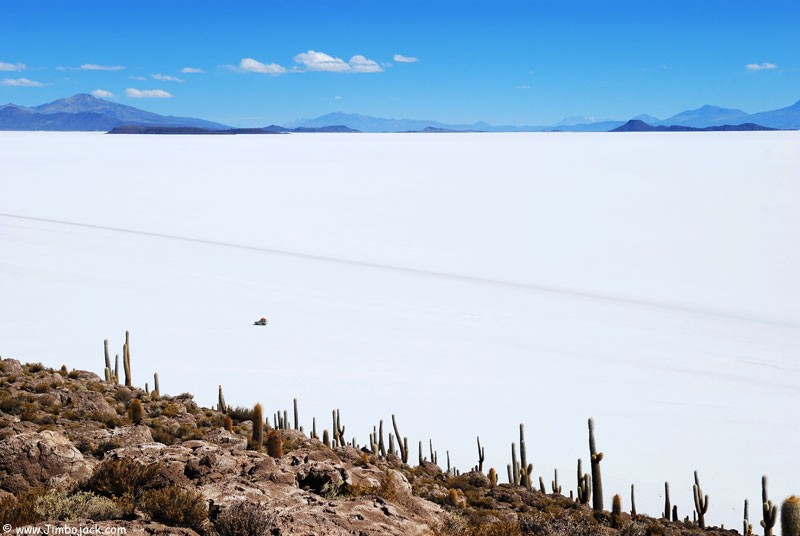
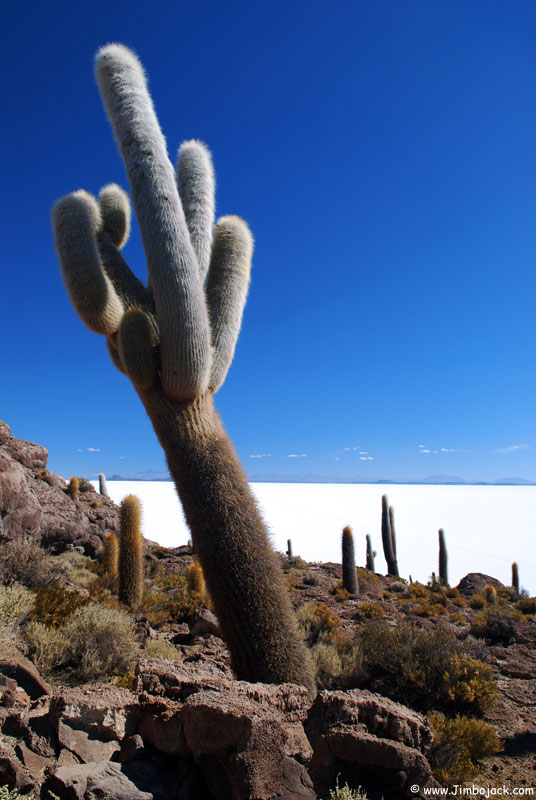
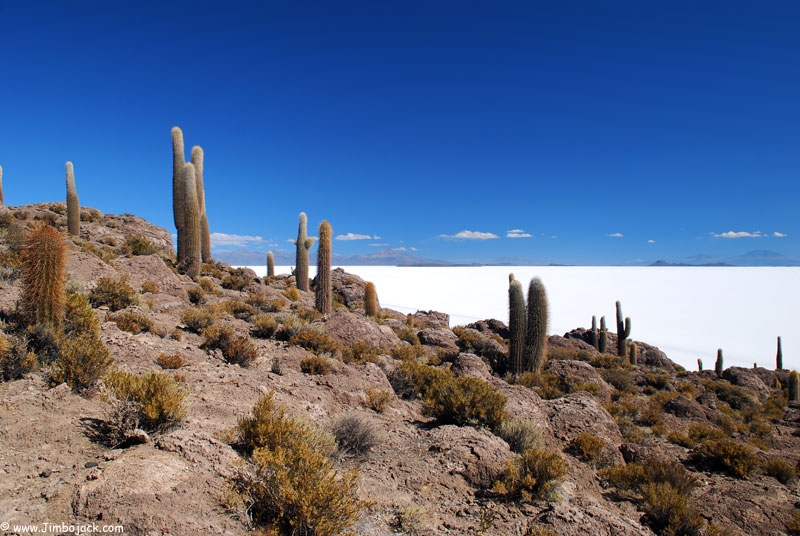
Car trouble
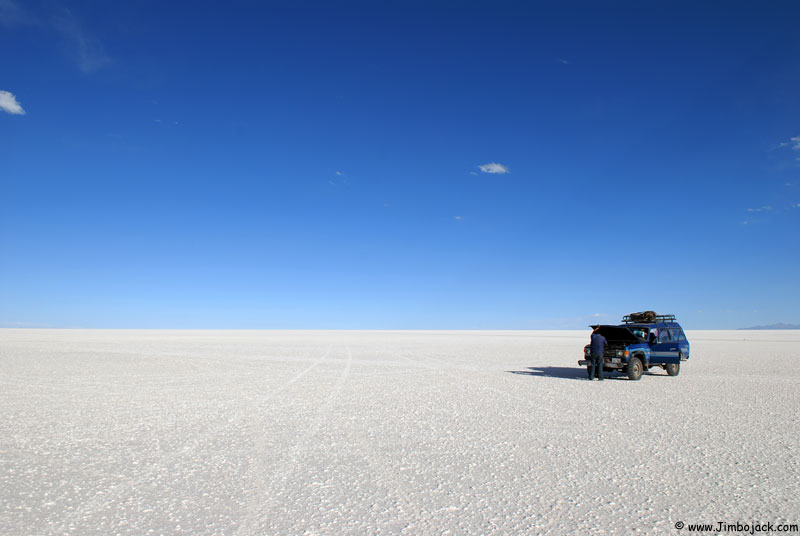
Reflections
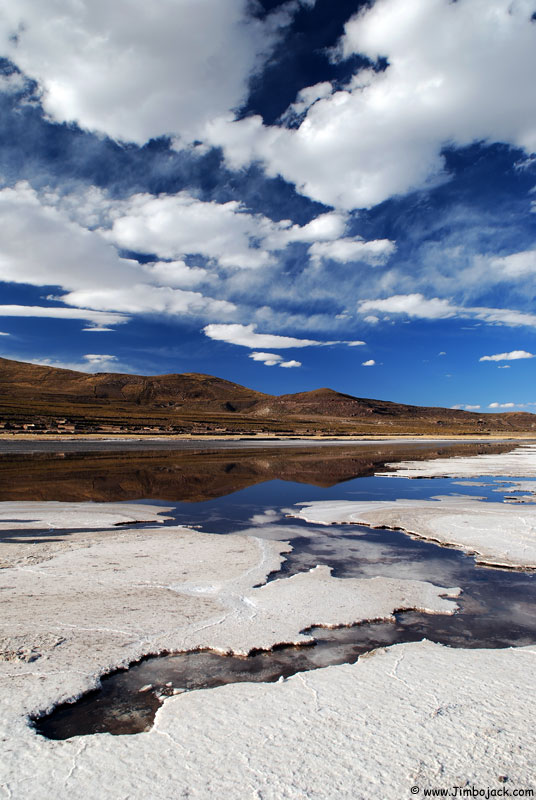
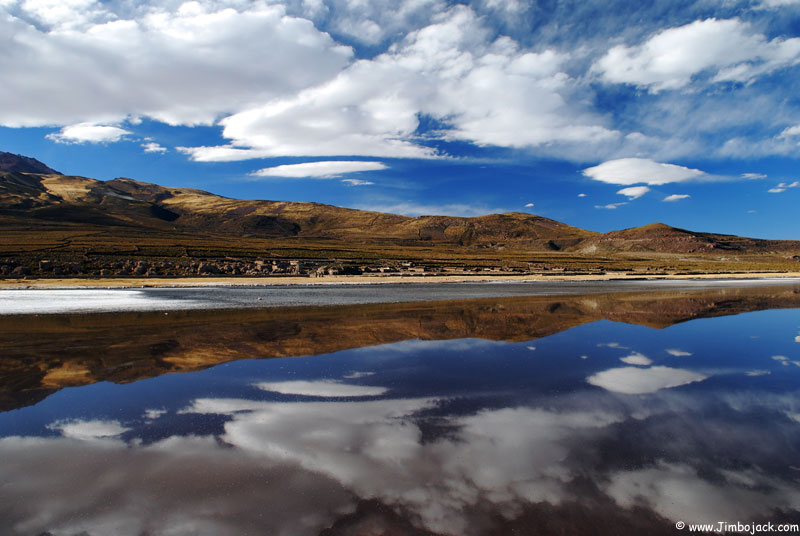
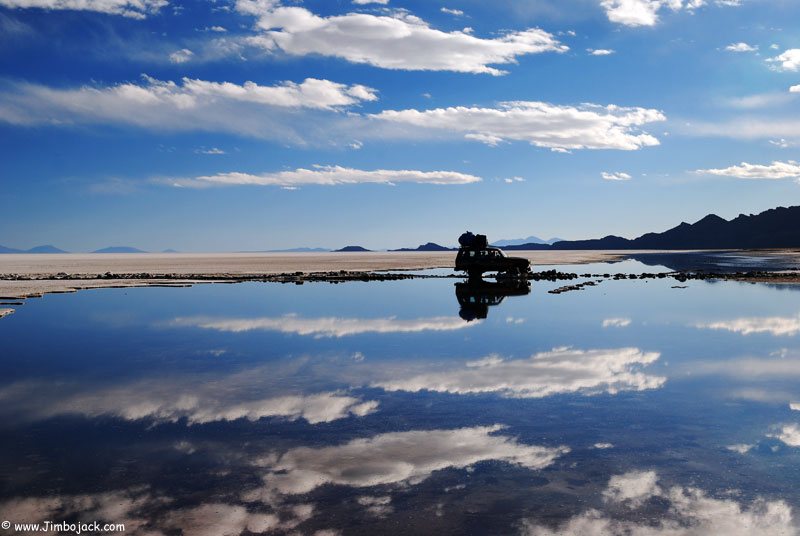
Flamingos
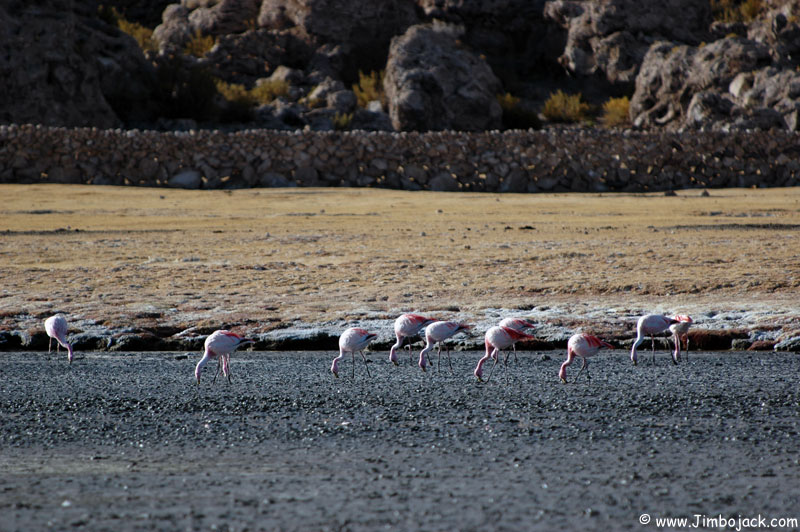
Burial Cave
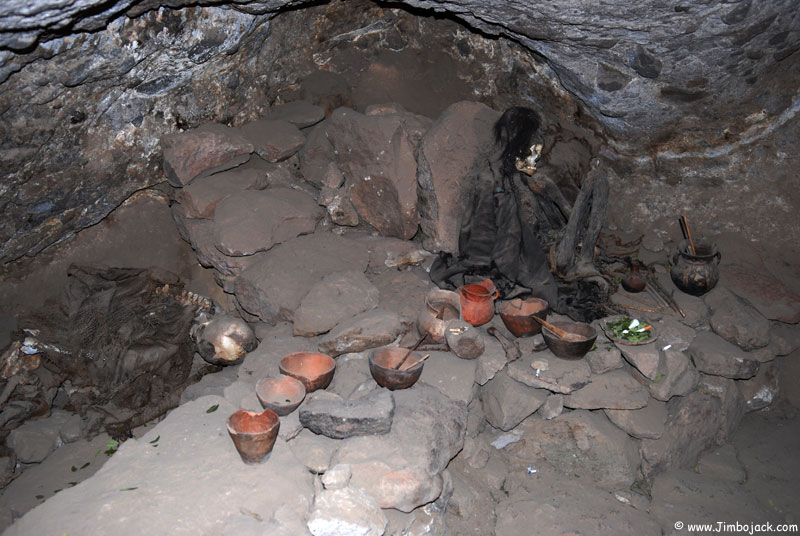
Sunset
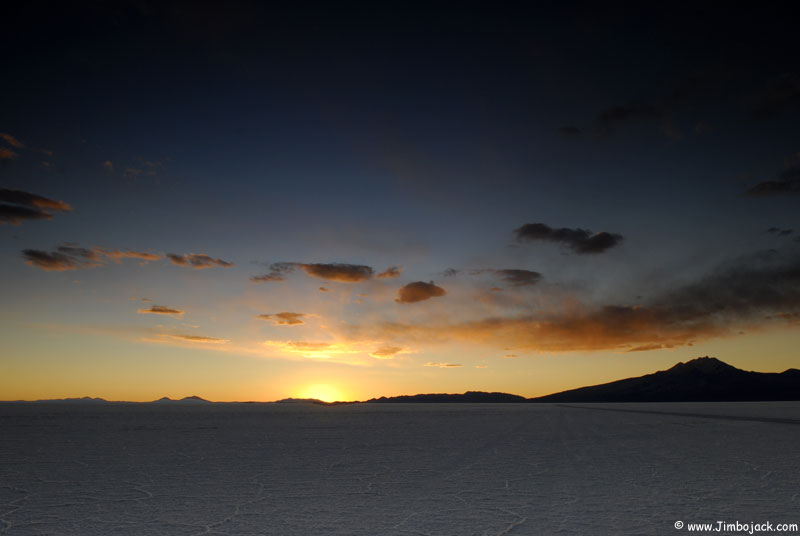
I hope you enjoyed the photos. More can be found on my site which I will be updating frequently. In the next couple of days I'll post photos from the mining town of Potosi.
Uyuni is a small town in the southwestern part of Bolivia, it was founded in 1889 by Bolivian president Aniceto Arce. It is very famous for the nearby salt lake, the Salar de Uyuni. The lake is located just a few kilometers from the town, and sits at an elevation of 3,653 meters. It is the worlds largest salt flat, encompassing 12,106 square kilometers (Almost 30 times the size of the Bonneville Salt Flats).
Nearby the town is a train graveyard that houses Bolivia's first steam engine, El Chirpa, dating from 1890. There is also an ore train that was robbed by the legendary bandits Butch Cassidy and the Sundance Kid (They both moved to Argentina then Bolivia to escape the attention they started receiving in the United States after their robberies).
40,000 to 25,000 years ago, lake Minchin existed in this region. It evaporated, and the area was dry for around 14,000 years before lake Tauca came into existence. Tauca was only around for about 1,000 years, and dried out. At it's highest point, the lake reached an elevation of 3,720 meters. After Tauca dried up, the lakes of Poopo and Uru Uru remained, as well as two areas of major salt concentration, the Salares de Uyuni and Coipasa.
The Salar de Uyuni is estimated to contain 10 billion tons of salt, with 20,000 tons being extracted yearly at the moment (18,000 tons for human consumption, 2,000 for livestock).
The lake has numerous islands on it, such as Isla Incahuasi. The island looks very surreal coming out of the totally white ground as you're driving towards it, and is covered by Trichoreus cactuses.
Volcan Tunupa rises out of the lake to a height of 5,432 meters. At it's base is a small village of Coquesa, surrounded by ancient villages and burial grounds. Ceramics, articles of clothing, gold and copper artifacts have been discovered in the area. Unfortunately, over the years many items have been stolen by tourists visiting the area. Partly up the volcano is an ancient cave that was used as a burial ground, some skeletons remain there and local people bring them offerings every once in a while.
The lake is a breeding ground for three different types of Flamingos. The Chilean flamingo, which reaches a height of over 1 meter and has a black-tipped white bill, the James flamingo which has dark red legs and a yellow and black bill, and the Andean flamingo, which is the largest of the three.
The Salar de Uyuni has more interesting things to see, but unfortunately I did not have the time to visit them. I will write about them at some point in the future, but for now please enjoy the pictures.
Train graveyard


Salt mounds

Men gathering salt

Geothermal activity at the lake


My Land Cruiser


Here I am airborne for a second

Land Cruiser and flags

Salt Hotel

Isla Incahuasi




Car trouble

Reflections



Flamingos

Burial Cave

Sunset

I hope you enjoyed the photos. More can be found on my site which I will be updating frequently. In the next couple of days I'll post photos from the mining town of Potosi.
Phillip
Just back from Europe, Eastern Turkey, Iraq and Iran, new photos coming soon!
Over 100 Countries, thousands of pictures, one Website (being redesigned at the moment)
www.Jimbojack.com
Just back from Europe, Eastern Turkey, Iraq and Iran, new photos coming soon!
Over 100 Countries, thousands of pictures, one Website (being redesigned at the moment)
www.Jimbojack.com
0
Comments
That is one gorgeous place, truly. I would love to see the surreal barrenness that is a salt flat someday. So what does one do when you get car trouble out there?
Photos that don't suck / 365 / Film & Lomography
You have some nice shots there. I am curious though about Nicaragua. I tried to find them on your website but couldn't see any yet.
I'll be heading there in a few months for three weeks. My wife is currently there doing her PhD research and I will be joining her. Where did you go? Any tips and/or suggestions? Things not to miss? Security concerns?
I'll be there not only to travel but will also be documenting the coffee harvesting in the North with some of the cooperatives that she is working with. We tend to be the types that stay away from the touristy places and I would appreciate any insights.
Cheers,
D
P.S. Feel free to PM me if you want to take this offline.
www.dlphotography.ca
www.redbubble.com/people/dlibrach
http://lrichters.smugmug.com